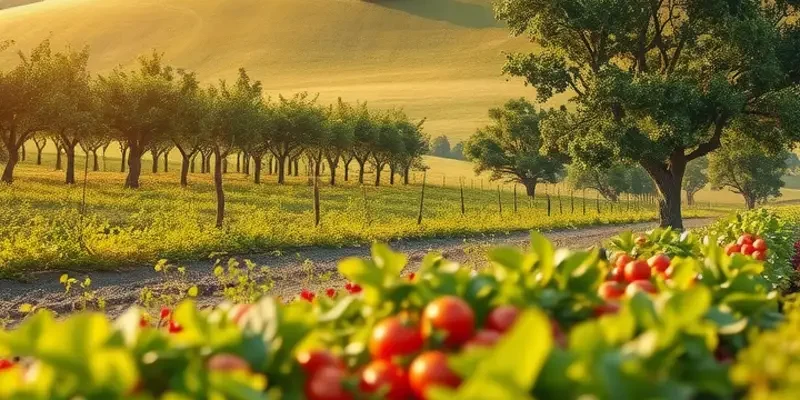Diving into global culinary heritage unveils a tapestry woven from diverse traditions, ingredients, and cultures. From the street foods of Southeast Asia to the elegant dishes of Europe, food acts as a bridge connecting us to shared histories and unique stories. Each bite tells a tale that transcends borders and invites us to explore the rich nuances of international cuisines, embracing both cultural significance and pure gastronomic delight.
Culinary Footprints: Mapping the World of Flavors

The world’s culinary traditions offer a rich tapestry woven from geography, climate, and historical influences unique to each region. As we embark on a journey across continents, it’s fascinating to see how these factors shape and flavor the foods we savor. The Mediterranean region, with its sunlit shores and fertile lands, is a prime example. Its climate is perfect for growing olives, grapes, and citrus fruits, which have become quintessential ingredients in dishes like the refreshing Mediterranean chickpea salad—a vibrant blend embodying the region’s bounty.
Southeast Asia’s Robust Palate: The steamy, tropical climate ensures an abundance of rice paddies, coconut trees, and spice-producing plants. These ingredients are crucial to the region’s robust and aromatic cuisine. Local herbs and spices such as lemongrass, tamarind, and galangal create complex flavor profiles that have become hallmarks of Southeast Asian dishes. Not to be missed is the communal nature of dining here, where sharing meals reflects the region’s emphasis on togetherness and harmony.
The Americas’ Eclectic Brews: In the vast expanses of the Americas, indigenous ingredients like maize, beans, and chilies lay the foundation for an eclectic culinary landscape. The introduction of new crops and livestock through colonization and trade brought transformative changes. European settlers introduced wheat, sugar, and dairy, which blended with native foods to create new, enduring traditions. The blending of these ingredients promoted the evolution of unique dishes and cooking styles reflective of cultural exchange and adaptation.
Trade Routes as Flavor Networks: Historically, trade routes were the lifelines for the movement of spices, grains, and culinary techniques. The Silk Road, for instance, not only transported goods but also stirred a melting pot of flavors and culinary knowledge from Europe to Asia. Such exchanges enriched local cuisines, introducing exotic ingredients and methods that are celebrated in today’s global culinary expressions.
Colonial Influence: Colonization had complex impacts on food culture, often imposing foreign staple foods while integrating local ingredients. In this fusion, the colonized and the colonizers’ cuisines intermingled, producing hybrid dishes that showcase a confluence of tastes and techniques.
The intricate dance between these influences and local traditions ensures that food is not just a means of sustenance but a narrative of history and environment. The world of flavors is mapped not only by geographical demarcations but by centuries-old stories of trade, colonization, and cultural mingling. As we explore further into these diverse culinary traditions, we find that every region’s food tells a story of endurance and innovation, reflecting local identity and global connections, evident from humble streetside stalls to sophisticated dining establishments.
Flavors of Fusion: The Art of Culinary Exchange

Culinary fusion unveils a dynamic tapestry woven from diverse cultural influences. This phenomenon transcends mere combination, creating unique flavors that honor origins yet inspire innovation. The movement is a testament to human curiosity and migration, bringing distant palettes into harmonious conversation.
One of the earliest examples of culinary fusion is found in the Middle East. Traders on the Silk Road mingled spices and cooking techniques, infusing local cuisines with exotic elements. Such exchanges created dishes like biryani, blending Persian influences with Indian flavors.
In modern gastronomy, fusion thrives as chefs craft new experiences by merging traditional cuisines. A compelling example is the Korean taco, a blend of Korean barbecue and Mexican tortillas. This street food staple marries tender, spiced meat with fresh cilantro and tangy salsa, delighting patrons with its bold flavors.
Similarly, Japanese cuisine has embraced the fusion trend through sushi burritos, combining Latin American and Japanese culinary traditions. Seaweed wraps encase rice, avocado, and raw fish within large tortilla-like forms. This fusion approach preserves the essence of sushi while offering an innovative dining experience.
Fusion also extends to ingredient adaptation. The Mediterranean chickpea salad (see a burst of freshness) illustrates this with its use of local produce combined with globally influenced spices. Chickpeas, a staple in Middle Eastern diets, find an unexpected partner in Mediterranean herbs, creating a refreshing and hearty meal.
Fusion cuisine is not without challenges. Respect for culinary traditions requires balancing innovation with authenticity. Chefs must navigate these waters carefully, ensuring their creations resonate with cultural integrity. Dishes like the Japanese-Italian fusion pasta manage this well by incorporating miso with classic Italian recipes, maintaining respect for both traditions.
Migration has played a critical role in the evolution of fusion foods. Immigrants bring their tastes and techniques, enriching host countries with culinary treasures. This diversity fosters creativity, enables culinary dialogues, and enhances regional food scenes.
Ultimately, culinary fusion celebrates diversity, innovation, and shared human experiences. As globalization continues, the world’s palette expands, offering endless possibilities for flavor exploration. The art of fusion cuisine embodies the spirit of creativity while paying homage to the rich tapestry of cultural heritage.
Final words
Global culinary heritage is more than just a collection of recipes; it embodies the stories, traditions, and connections of people across the globe. By exploring diverse food cultures, we awaken our senses to the rich tapestry of flavors that define humanity’s relationship with food. Embracing these culinary traditions fosters appreciation for diversity and helps preserve the unique heritage of various cuisines. Every bite serves as a celebration of culture, history, and communal love that we share over the dinner table. Let the journey continue as we discover the ever-evolving landscapes of global flavors.








